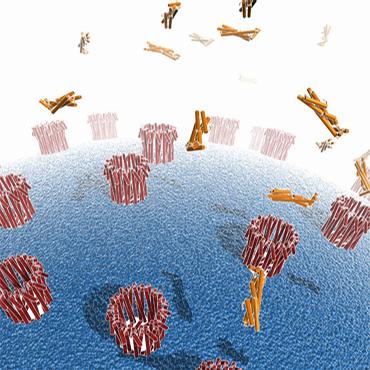Team:Paris/Addressing overview clya
From 2009.igem.org
iGEM > Paris > Adressing > Export & ClyA > ClyA
ClyA
We work on the cell-cell communication using vesicle. That’s why we have to find something to track our vesicle, but also put a signal peptide (or anything which can create a signal) in this vesicle, in order to make a signal transduction when the vesicle fusion with his target cell. So ClyA seems to have an interesting ways to success in these functions, in fact ClyA in E.Coli in high expression in OMV, and it’s one of the proteins that can pass the cytoplasm to the persiplasm and integrated to vesicle.
However there are some inconvenient because ClyA is an alpha-PFT for Pore Forming Toxins. PFTs are potent virulence factors class starting in a soluble form to an outer membrane-integrated pore. They exhibit their toxic effect either by membrane permeability barrier destruction or by toxic components delivery through the pores which forming by several assembly 8 or 13 ClyA subunits. PFTs can be subdivided into two classes; α-PFTs and β-PFTs, depending on the suspected mode of membrane integration, either by α-helical or β-sheet elements.
So some article show that E.Coli K12 using this ClyA to “destruct” other bacteria or eucaryot cell. But this virulence was not show in same strain.
In some article, it’s fused to GFP in order to observed the vesicle, so we think the fusion of ClyA with a peptide signal can induct the receptor when the vesicle fusion to its cell target liberate the Cly A in the target cell.
AVANTAGE
- Cly A can be used to co-localize fully functional heterologous proteins directly in bacterial OMVs
-We can fuse GFP to the C or N term of Cly A, then we could be easily tracked during vesicle interaction other cells, since once it’s fused OMV become highly fluorescent.
-ClyA is capable of co-localizing a variety of structurally diverse fusion partners to the surface of E. coli and their released vesicles, but only when the periplasmic disulfide bond-forming machinery was present ,it’s makes OMVs an ideal structure to transport hydrophobic compounds like membrane proteins into the host.
-Cly A confers vesicle binding to and invasion of host cells.
-ClyA was significantly enriched in OMVs relative to other lumenal and membrane bound OMV proteins.
DRAWBACK
-Cly A is cytolitic and a PFTàso it’s virulent; it does target cell lysis by forming a pore or by delivery of toxic components through the pores. But we find only that ClyA is virulent for mammalian cell or erythrocytes, and it’s a strong interaction with cholesterol which is in mammalian cell membrane. For the virulence in bacteria cell we think that it’s not because there is no cholesterol in the bacteria membrane.
INTERESTING QUOTATIONS:
- unfused ClyA accumulated in the cytoplasm, periplasm and OMV fractions
-"It may also be possible to use this molecule as a model system to develop predictive rules that will aid in understanding of molecular events that govern related cellular processes such as membrane fusion of cellular compartments and viral membrane fusion."
Source:
-Kim, J.-Y. & DeLisa, M.P. Engineered bacterial outer membrane vesicles with enhanced functionality J.Mol. Biol. (2008) 380, 51–66
-Muller, M. & Ban, N. The structure of a cytolytic a-helical toxin pore reveals its assembly mechanism Nature 459, 726-730 (4 June 2009)
- Westermark, M. & Uhlin, B.E. Silencing and Activation of ClyA Cytotoxin Expression in Escherichia coli
 "
"
